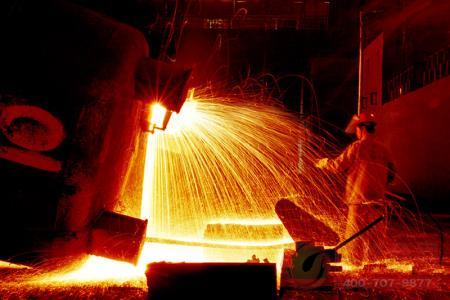
1. Characteristics of iron and steel smelting
(1) Resource intensive and energy intensive. In the iron and steel complex, each ton of steel will consume (standard coal) 0.7-0.8t, 1.5-1.65t iron ore, and 3-8t new water.
(2) The scale of production is large, and the logistics throughput is large. The basic level of modern steel mills is roughly divided into 1 million to 2 million, 3 million to 4 million tons, and 6 million to 8 million tons. The logistics involved per ton of steel will be 5 to 6 tons.
(3) The manufacturing process has many processes and complicated structures. The manufacturing process is accompanied by a large amount of material/energy emissions, creating a complex environmental interface.
2. Process of iron and steel smelting
The task of iron and steel smelting is to smelt iron ore into qualified steel materials. According to the degree of deoxidation and decarburization process of different steel products from iron ore, the process of iron and steel smelting can be roughly divided into the following types:
(1) Indirect steelmaking method. It consists of two steps: blast furnace iron making and converter iron making. The iron ore is first melted and reduced to pig iron (high in carbon), and then the pig iron is charged into a steelmaking furnace for oxidation and refining into steel, also called indirect steelmaking. Because of its mature technology, high productivity and low cost, it is the main method for large-scale production of modern steel smelting.
(2) Direct steelmaking method. The method of smelting steel into iron by one step is also called direct steelmaking. Instead of blast furnace and expensive coke, the method puts iron ore into a direct reduction furnace and uses a gas or solid reducing agent to reduce the semi-molten sponge iron containing low carbon (<1%) and containing impurities. This kind of iron can be used to replace scrap steel as electric steelmaking raw material, thus forming a new steel production process for direct reduction-electric furnace series production of steel. The process has few steps, but the iron recovery rate is low, and it is required to use high-grade concentrate and high-quality primary energy, and the power consumption is high.
(3) Smelting reduction method. A non-blast furnace ironmaking method in which iron ore is reduced to iron metal by carbon at a high temperature molten state, and the product is liquid pig iron, which can be refined into steel by a conventional converter.
3. Iron and steel smelting products
Iron and steel smelting products are:
1 pig iron, mainly produced by blast furnace, can be divided into steelmaking pig iron according to its use (the main raw material for steelmaking production, low silicon content, high sulfur content, hard and brittle) and cast pig iron (mainly used for casting, silicon content) Higher, lower sulfur content, lower melting point and good fluidity);
2 steel, which is an iron-carbon alloy containing less than 2% carbon and containing a small amount of other elements;
3 iron alloy, which is an intermediate alloy of iron and one or several elements, mainly used for deoxidation of steelmaking or as an alloying additive.
By-products of steel smelting are slag and gas.
G80 Forged Master Link Assembly,G80 Master Link Assembly,G80 Link Assembly
Shandong Shenli Rigging Co.,LTD. , https://www.shenliriggingcn.com